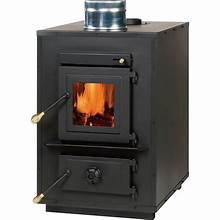Community
North Yarmouth is a small rural town north of Portland, Maine with a population of over 4000 people and comprised of 21.22 square miles. Many local residents work in the greater Portland area, as well as in town. Freeport, Yarmouth and Falmouth are nearby communities. It is bisected by the Royal River, a well-used source of community recreation, as it travels through North Yarmouth to the Atlantic. Small businesses thrive here, including a convenience store, cafes, offices and other companies. Toddy Brook Golf Course attracts many golfers throughout the year. The town has Christmas tree farms, apple orchards, greenhouses and a garden center, assuring that it stays in touch with its prized agricultural roots. A MOFGA-certified organic farm is located on the Skyline Farm property. Annually, a popular business-to-business trade show is sponsored by the North Yarmouth Business Association, which represents many small businesses in town. There are churches, the Carriage Museum at Skyline Farm, beautiful parks, over 71 miles of well-kept walking trails, and snowmobile trails.. In 2019, North Yarmouth constructed and opened Wescustogo Hall and Community Center. Wescustogo Hall and Community Center functions include but are not limited to: town meetings, business association meeting, open for public and private group rentals, basketball practices, and many more activities. The community center is designated as the town’s emergency shelter.
DRY HYDRANT ACCESS
North Yarmouth Fire Rescue uses three dry hydrants in the Town of North Yarmouth for the areas of town that are not protected with Fire Hydrants. These hydrants are key in the event of a fire. We currently have Dry Hydrants located at the Royal River on Route 9, on Mill Rd at the River, and at Jewett’s Pond on New Gloucester Rd. Public Works keeps these areas clear for fire department access during a fire. There are also no parking zones set up at these sites stating “PARKING for EMERGENCY VEHICLE ONLY”. Over the past few winters, many people have been utilizing these dry hydrant areas for parking while using the rivers and ponds for recreational activities.
What is a Dry Hydrant?
A dry hydrant is a non-pressurized pipe system permanently installed in existing lakes, ponds, and streams that provides means of suction supply of water to an engine hooked into the system. This gives us the ability to provide a constant and dependable water source for any fire suppression activities. A Fire Engine is placed and hooked into the dry hydrant to draft the water out of the water source and the water is then shuttled to the fire scene with the help of our tank truck and with the help of our mutual aid partners.
In many rural areas, a lack of water mains and domestic fire hydrants can sometimes impair a fire departments ability to do its job quickly and efficiently. Tanker trucks must be used to carry large amounts of water to the scene of a fire. The success of the operation hinges on the distance the trucks must travel to the water fill up spots to the fire scene.
When access is blocked to these dry hydrant sites, you have effectively taken that critical water source out of service and the fire department may have to travel another 5-7 minutes to establish another fill site. This adds to the time that it takes to get water from the fill site to the fire scene. This added time could mean the difference between saving your personal belongings to losing them all.
_________________________________________________________________________________________________________
Wood-burning Stove Installation Guide

Click here for more information.
Use your generator safely during a power outage

Generators are great... especially when you lose power. However, generators can be dangerous when not used properly.
- Only operate your generator outside in a dry area. Never take a generator inside the home or garage.
- If you are using extension cords make sure you use the proper sized cords.
- Avoid overloading your generator by plugging in too many appliances.
- If you want to wire your generator directly into your home's existing electrical system you should have a certified electrician hook up your generator... in most cases you will need to throw a switch before using your generator.
- Only fuel your generator when it is not running and keep all fuel away from the generator and outside the home.
Finally, if you see an electrical repair crew working in the area it's a good idea to let them know you're using a generator. This will keep them safe and they can advise you when you'll be able to switch off the generator as power is restored to the area.


